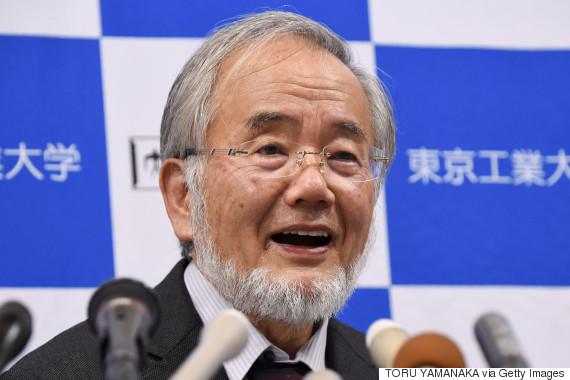Dr. Yoshinori Ohsumi is a Nobel Laureate after my own heart.
Earlier this week, it was announced that Dr. Ohsumi was the sole winner of the 2016 Nobel Prize in Physiology or Medicine for discoveries on the mechanism of autophagy. Our own Dr. Alex Berezow provided a thorough explanation of the process at the heart of the award winning work.
But, what caught my attention was not the work that Dr. Ohsumi did in the past, rather, his vision for the future. Not one to waste time, in an interview just the day after the announcement, he highlighted two critically important topics that he will focus on for the rest of his career—building a new research center for microbiology research, and creating a sustainable system for supporting young scientists.
Dr. Ohsumi, you had me at microbiology.
Most people start to care about viruses or bacteria right around the time that they get infected by one of them. But, only a few microbes actually make us sick, so its a tough sell that something harmless, like Saccharomyces cerevisiae, is worth pouring millions of dollars into researching.
However, Dr. Ohsumi disagreed, saying at the Nobel Prize press conference, "There is always information under a microscope." And, history supports this. It is not an overstatement to say that bacteria played a part in almost all of the key biological discoveries in the 20th century. Starting in the early 1900s, when scientists were starting to uncover the role of DNA, and molecular biology was just developing into a field, bacteria were the tool of choice. CRISPR-Cas9 is an excellent example of how bacteria continue to be at the leading edge of new discoveries in cutting edge research.
Most microbiologists, at one point or another, have read Microbe hunters, written in 1926 by Paul de Kruif. The book chronicles the work of early scientists such as Leeuwenhoek, Pasteur, Koch, Walter Reed and Paul Ehrlich—scientists who laid the foundation for the scientific discoveries that are being made today. These great thinkers did not have to worry about how their work applied to a disease or link to a foundation. They, like Dr. Ohsumi, just followed their own curiosity.
It is this concept that is the seed for Ohsumi's second goal. In the same interview, he urged support for young scientists so that they may follow their own ideas, and he has the best way to do that— by starting it himself. He suggested that he will use the prize money (almost a million dollars) to help get this initiative going, but cannot do it alone and needs financial backing from the Japanese government.
So, Ohsumi wants to set up a center where well funded young microbiologists can design their experiments with freedom, follow their scientific curiosities, and be unrestricted while trying to make scientific discoveries. Basically to recreate the past.
And, judging by the countless discoveries that were made in the 20th century, it sounds like that is not a bad idea. These days, it seems like the big ideas of Mark Zuckerberg or Elon Musk garner the most attention. Perhaps, we should give Dr. Ohsumi, who has been in science for 50 years and just won the highest honor given to scientists, a bit of our attention.




